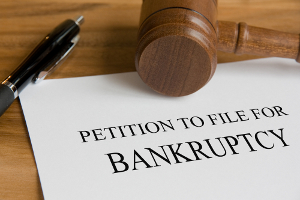 When a debtor files bankruptcy they have to file a set of schedules. These schedules include a list of all of their real property and personal property. Real property is any interest in land that the debtor owns. This includes houses, unimproved land, commercial buildings, burial plots, etc. All real property is listed on the debtor’s Schedule A. Debtors list all of their personal property on Schedule B. Personal property is any interest in property that is not real property. Between Schedule A and Schedule B the debtors should have listed everything they own.
When a debtor files bankruptcy they have to file a set of schedules. These schedules include a list of all of their real property and personal property. Real property is any interest in land that the debtor owns. This includes houses, unimproved land, commercial buildings, burial plots, etc. All real property is listed on the debtor’s Schedule A. Debtors list all of their personal property on Schedule B. Personal property is any interest in property that is not real property. Between Schedule A and Schedule B the debtors should have listed everything they own.
Personal property includes cars, clothing, jewelry, household goods, money in bank accounts, and any other type of asset that is not land. Personal property also includes intangible property interests, such as the right to sue someone to recover money damages or collect a debt. Life insurance policies are also property and are often forgotten when Schedule B is prepared. Even term life insurance policies must be listed. This type of asset is usually listed with a $0 cash value but disclosing the death benefit.
The reason for listing all of a debtor’s assets in their bankruptcy schedules is to determine whether or not they have nonexempt property. Debtors have to assign a value to their property in their schedules. This value is fair market value rather than replacement value. Fair market value is what they could sell the property for today rather than what it would cost them to replace it.
Once a value is assigned to the property then the debtor must protect the asset with exemptions. Exemptions are laws that protect property from creditors. If there is a portion of the value of the property that cannot be covered by the exemption, then the debtor has nonexempt property. In a Chapter 7 case, the trustee can seize nonexempt property, sell it, and distribute the proceeds to the creditors listed in the case. In Chapter 13 cases the debtor must pay an amount equal to the value of the nonexempt property to their unsecured creditors.